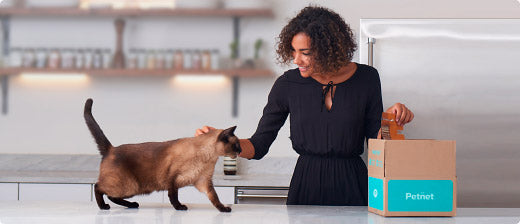Almost every cat owner has experienced this—they find out about a healthier cat food, purchase it, and excitedly give it to their cat... all to receive a very lukewarm response. “What on earth is this? Where is my food?” they seem to say.
Why would your cat resist eating something that is fresher, more species appropriate, and has less hard-to-digest junk ingredients in it?
Reason #1: Your kitty is addicted to junk food.
Cats can become addicted to foods as easily as humans can. They can be addicted to mainly the shape and texture of the food, and foods that are high in fat, carbohydrates, and salt. If you've been keeping your cat on a dry kibble diet, chances are, your cat is addicted to all of these properties. Your cat won't be interested in healthier food, since healthier food doesn’t have those properties.
Reason #2: You’ve changed the diet too quickly.
Properly transitioning a cat from a not-so-healthy food to a healthy food takes quite a long time. Your cat's body needs to work harder to digest unprocessed, whole foods than the more nutrient deficient, highly processed foods. If your cat actually does eat the new food immediately, it could suffer from upset stomach and diarrhea. How much would you want to eat a food again after it caused you pain the first time?
A slow transition can ease this gastrointestinal irritation. Try giving the new food to your cat as a snack in between meals. But be patient—making a full transition can take days, weeks, or even months.
Reason #3: They still have access to the less healthy food.
When cats have access to the unhealthier food they are more familiar with, they aren’t as likely to try something new. They don’t see a reason to bother with it. This is a big problem for owners who currently free-feed their cats and want to transition to a wet or raw food.
A word of caution—never let your cat go without eating at all. Cats can and will starve themselves to the point of serious illness. If cats have received less than 50% of the calories they require in a day, hepatic lipadosis (or fatty liver disease) will set in.
The Remedy
Start the transition with stopping free-feeding. Feed your cat the original food... but on a schedule, about 2-3 times per day. Talk to your veterinarian to determine how many calories your cat needs per day and consider that in your schedule. This scheduled feeding can help you learn to control your cat’s weight as well!
After your cat has become accustomed to scheduled feeding, begin transitioning to the healthy food. Give one meal of healthy food and use the original food for the rest of the meals. After your cat gets used to this and has no diarrhea, replace another meal with healthy food. Repeat the process until all of the original food is transitioned out.
Have you ever made the switch to a healthy food with your cat?

 Food
Food
 Food
Food
 Food
Food
